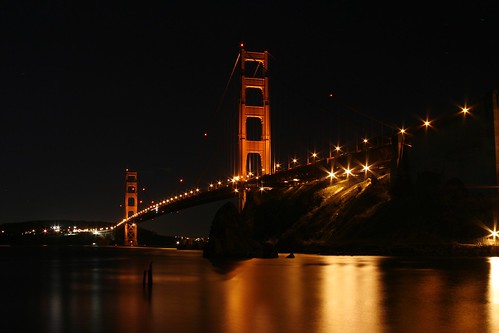When i first got my camera. I took it out to different places. I had a bunch of shots at each place, go home, pop the CF card in the reader and start wondering why all my pictures doesn't look like any of those that I saw on the net. The easy answer for that is my camera isnt as good; but the most convincing answer for that is my technique is simply not good enough. Through out a many miserable failures, I gathered these tips that i have learnt to improve the quality of my photos.
1. Use the tripod: I know this sounds silly. The tripod is such a hassle to carry around; but trust me, you'll be kicking yourself when you need one and its not there. With non IS (image stablizer) lens, this should be the item you always need, because even a slight shake will ruin the picture (usually any over 1/60). This is also true with IS lens when shutter speed is higher than 1 sec.
2. Change your camera variables: Im refering to ISO, Aperature, shutter speed, image size, zoom , etc ...
- ISO : When its too dark ,increasing your ISO should be a good idea. An alternative for that when you have a tripod is, set your ISO normal and set shutter speed higher so your camera can absorb more light.
- Shutter speed: shutter speed is used as far as exposure is in concern. When there's not enough light, slower shutter speed will compensate the condition. The shutter speeds and apertures are interchangeable.
- Image size : I usually set my image size at large and RAW. Larger image size contains more detail than smaller one. In Addition , it will give your more option when it comes to printing out the image. Large size image -> good in large print, excellent is smaller print; Small size image -> good on small print, and you'll be wasting your money if you decide to boom it up.
- Aperature : Aperature number is important too. Setting it higher (lower amount of light goes in to your sensor) will increase the detail of your picture greatly. Its the same with human pupil except that the lens won dialate it along with the condition, so you just gotta do this yourself. Tips: When taking night photo, as you set your aperature high, street light start to have the star shape.

Picture with low Aperature value. (Click on the image for larger version)
Same angle with higher aperature value. Notice the star shape light and better detail(Click on the image for larger version) - Zoom: Dont waste your pixel on the pointless background. Zoom in and focus on the thing you want a shot at. That will greatly increase the quality of your picture.
3. How many is enough : Once you have a idea of what you want in the picture. Take at least 3 shots, each with different variable setting. This way you can compare and evaluate each picture in the set. Also this is a good practice for beginner like me.
4. "Wait ! But what if I tried all the above and it still looks bad ? " : There's something call photoshop my friend! When all efforts fail to overcome the condition, you might need a little help from software. Picassa is a great free program for this.
That's all i got, I hope it helps. Im still in the learning process, I'll post up more tricks/tips i learn in later post. Have fun capturing the moment.
Opinions and corrections are deeply appreciated.





